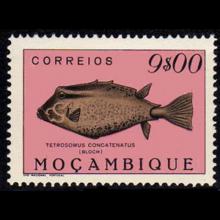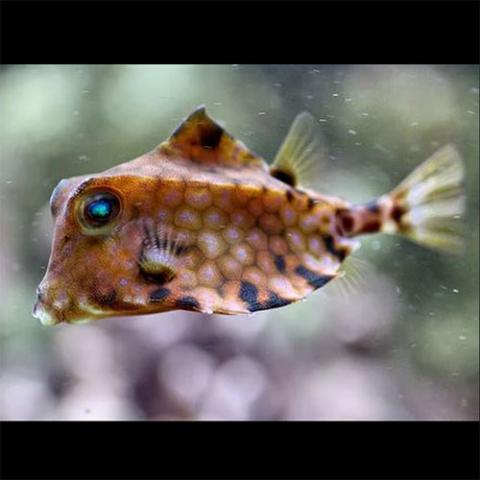NAMES
TAXONOMY
Mozambique
Issued:
Stamp:
Tetrosomus concatenatus
Mozambique
Issued:
Stamp:
Tetrosomus concatenatus
Mozambique
Issued:
Stamp:
Tetrosomus concatenatus
Genus species (Animalia): Tetrosomus concatenatus
The triangular boxfish (Tetrosomus concatenatus) is one of four fish species in the genus Tetrosomus in the boxfish family. It reaches a maximum length of 30 cm (12 in).
Etymology
Tetrosomus: Greek, tetra = four + Greek, soma = body
Distribution
This species is found in the Indo-West Pacific oceans. It ranges from East Africa to southern Japan and New Caledonia.
Biology
Tetrosomus concatenatus enters muddy bays or estuaries; usually with large remote sponges. Also found in seagrass and weed bottoms of coastal reefs. T. concatenatus is a solitary, as opposed to a pelagic, fish. They do not congregate and self-organize and maintain cohesion to gain protection from predators, and to locate and capture resources more efficiently and effectively than could a solitary individual.
Description
Members of this family occur in a variety of different colors, and are notable for the hexagonal or "honeycomb" patterns on their skin. They swim in a rowing manner. Their hexagonal plate-like scales are fused together into a solid, triangular or box-like carapace, from which the fins, tail, eyes and mouth protrude. Because of these heavy armoured scales, Ostraciidae are limited to slow movements, but few other fish are able to eat the adults. Ostraciid boxfish of the genus Lactophrys also secrete poisons from their skin into the surrounding water, further protecting them from predation. Although the adults are in general quite square in shape, young Ostraciidae are more rounded. The young often exhibit brighter colors than the adults.
Reference: Wikipedia, Fishbase.se
Photo: https://alchetron.com/


